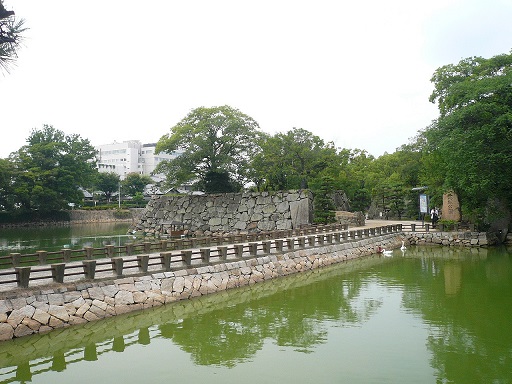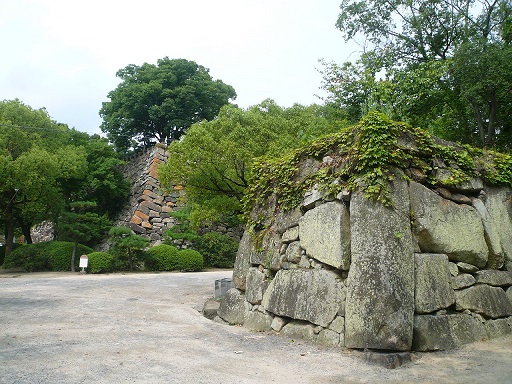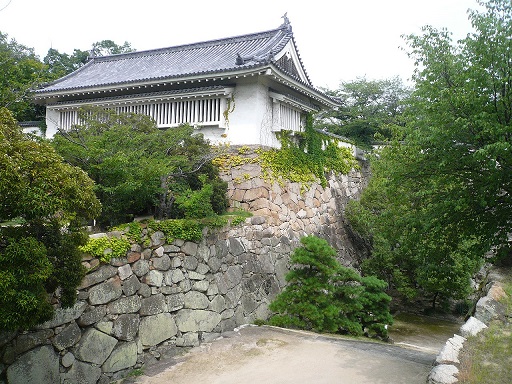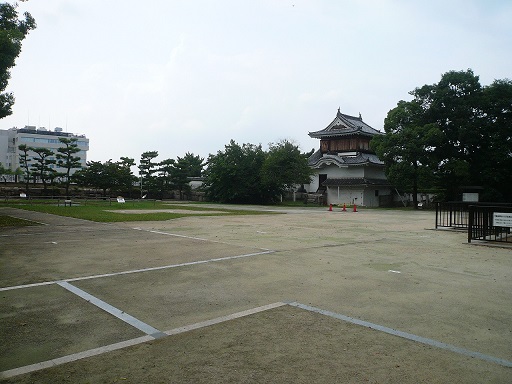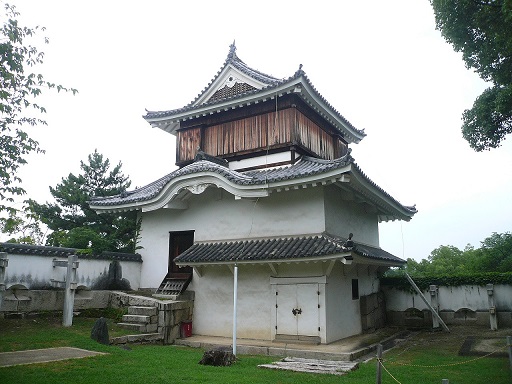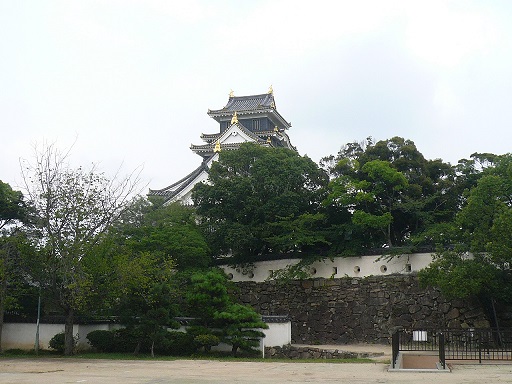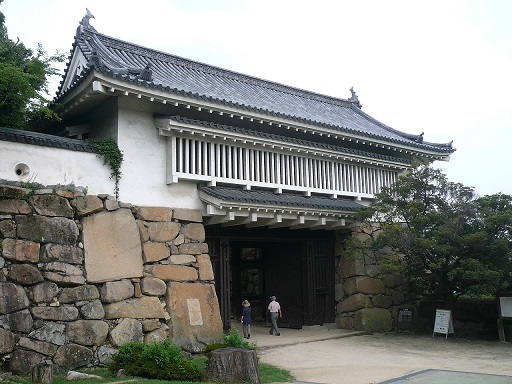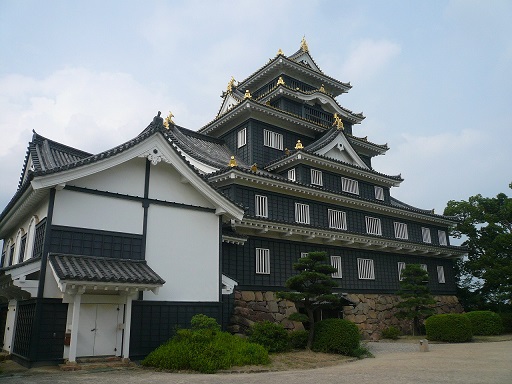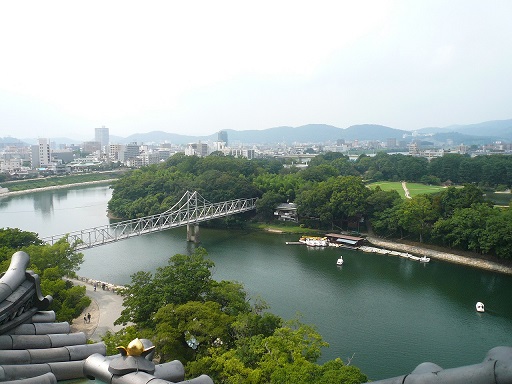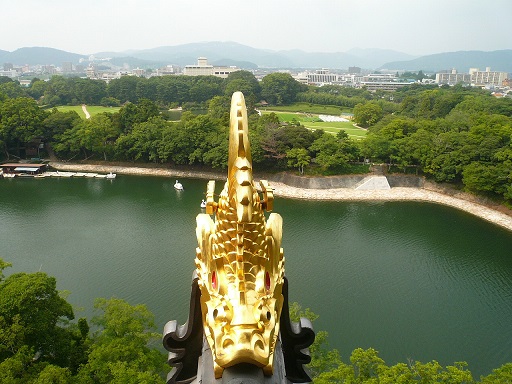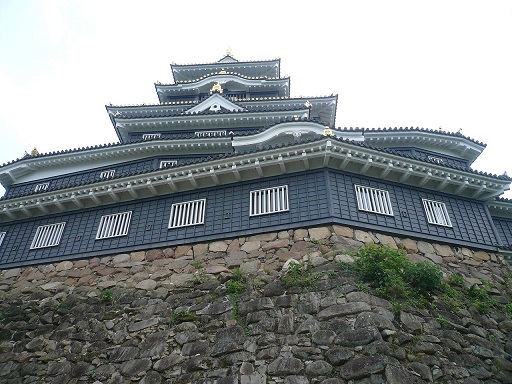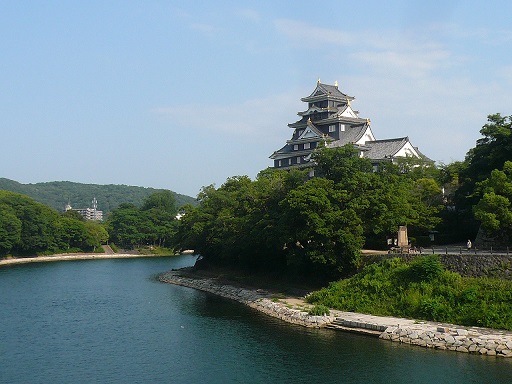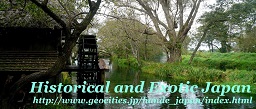|
Okayama Castle
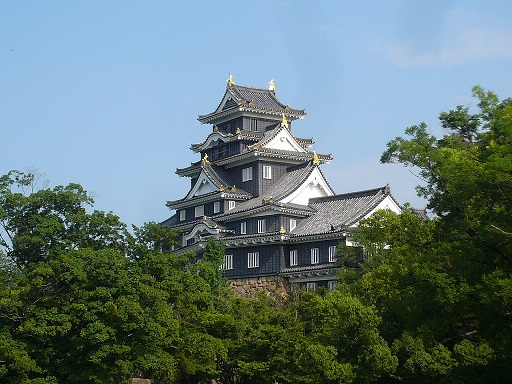
Okayama Castle was built in 1597 by UKITA Naoie and his son, Hideie. The castle tower of Okayama Castle has three roofs and six stories. The walls of Okayama Castle tower are covered by weatherboards with black lacquer painting. Because of this appearance, the nickname of Okayama Castle is "U-Jyo", which means a castle of crow. The main bailey of Okayama Castle remain along the Asahi River. The inner moat surrounding the main bailey is wide. You will cross an earth-paved bridge to Okayama Castle. |

